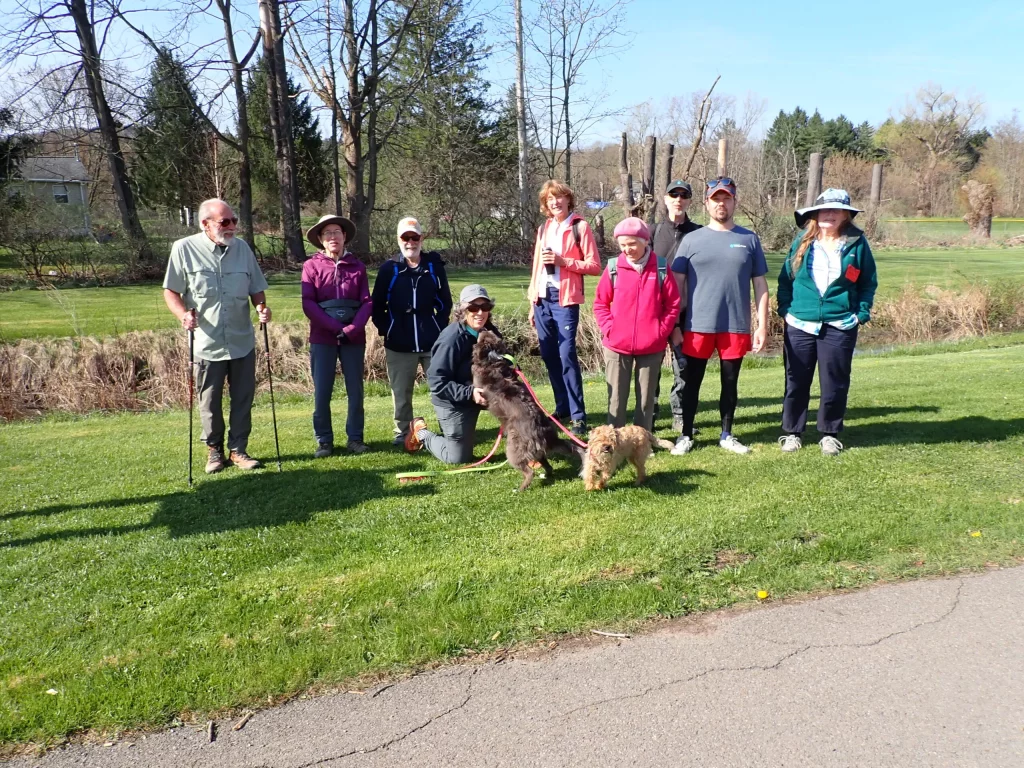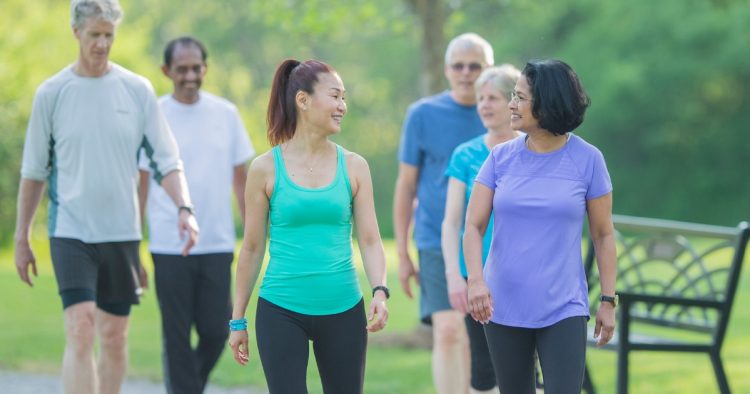Preventative healthcare often evokes images of screenings, vaccinations, and dietary advice given in clinical settings. Yet some of the most effective interventions in community wellness are taking place far from exam rooms—on sidewalks, greenways, and neighborhood trails. One of the most powerful, low-cost strategies in the fight against chronic disease and sedentary lifestyles is hiding in plain sight: walking. Specifically, organized neighborhood health walks—community-led or supported walking groups designed to improve physical health while fostering connection and education—are gaining traction as grassroots tools for preventative care. These walks do more than get people moving. They teach participants the fundamentals of healthy living, encourage behavior change, and build a culture of shared accountability and wellness. As cities grapple with rising healthcare costs and health disparities, the humble community walk is quietly emerging as a model for sustainable, preventive public health.
The Simplicity and Power of Walking
Walking is arguably the most democratic form of exercise—free, accessible, low-impact, and familiar. It requires no special equipment, no gym membership, and minimal instruction. Regular walking has been shown to reduce the risk of heart disease, stroke, type 2 diabetes, depression, and certain cancers. It improves mood, boosts energy, supports weight management, and even strengthens memory. Despite these benefits, millions of people still fall short of recommended daily activity levels, especially in underserved communities where safe outdoor spaces and wellness programming may be limited. Health walks fill this gap by embedding structured, inclusive walking into daily life. When neighbors commit to walking together, the act of movement becomes more than a habit—it becomes a shared value.
Community Walking Groups: A New Kind of Health Class
Neighborhood health walks function as more than simple strolls. Organized by health professionals, community leaders, or volunteers, these walks often incorporate brief health education sessions. Topics can include hydration, stress management, balanced eating, sleep hygiene, proper walking posture, and goal-setting. Some groups partner with local clinics, universities, or health departments to bring in guest educators, such as dietitians or physical therapists. These mini lessons are typically informal and occur at the beginning, midpoint, or end of a walk. Because they’re delivered in a non-threatening, communal setting, participants tend to be more engaged and open. For many, these sessions provide their only consistent access to health education. In this way, walking groups serve as mobile classrooms, democratizing preventative care one step at a time.
Building Consistency Through Accountability
One of the biggest challenges in adopting healthier behaviors is maintaining consistency. Walking groups help overcome this hurdle by building accountability through social connection. Knowing that others are expecting your presence creates a gentle pressure to show up, even when motivation dips. The regular rhythm of walks—whether daily, weekly, or bi-weekly—establishes a routine that reinforces commitment. Members often form bonds that extend beyond the group, offering emotional support and encouragement in other areas of life. This network effect transforms personal goals into shared missions. As participants witness peers improving their health, a contagious sense of possibility spreads, making wellness feel attainable and communal rather than individual and isolating.
Walk Leaders as Wellness Ambassadors
The success of community health walks often hinges on the presence of trained or passionate walk leaders—individuals who guide the route, facilitate discussion, and serve as role models. These leaders may be nurses, fitness enthusiasts, retirees, or simply dedicated residents with a vision. Many undergo basic training in first aid, group management, and wellness communication. Their role is not only logistical but motivational; they help create an inclusive, non-judgmental atmosphere where every participant feels seen and valued. In some programs, walk leaders collect data on group progress, offer individual goal-setting support, or coordinate themed walks focusing on different aspects of health. Whether they’re leading stretches, sharing healthy recipes, or discussing the importance of sleep, walk leaders embody what it means to bring care into the community.
Inclusivity: Making Fitness Feel Belonging
For many people—especially seniors, individuals with disabilities, or those with larger bodies—traditional fitness environments can feel unwelcoming or intimidating. Walking groups offer a gentler entry point into movement, one that prioritizes inclusion over performance. Most walks are paced to the group’s slowest member and include rest breaks or route adjustments as needed. There’s no dress code, no fitness tracking pressure, and no assumption of prior athletic experience. This openness helps participants build confidence and reduces the shame often associated with exercise avoidance. For many, joining a walking group is the first time in years they’ve moved consistently and without fear of judgment. This sense of safety is transformative, enabling lasting change in attitudes toward health.
Real-Time Learning in Real-Life Contexts
Unlike health advice dispensed in sterile clinics, the lessons taught during neighborhood health walks are rooted in participants’ daily realities. A discussion about nutrition might center on what’s available at the local corner store. A conversation on stress relief might acknowledge housing insecurity or caregiving burdens. This contextual relevance increases the likelihood of knowledge being internalized and applied. Participants can immediately test strategies—like mindful breathing or posture adjustments—during the walk itself. The group becomes a living laboratory, where real-time feedback, troubleshooting, and celebration occur. Walking through the very environments where health challenges occur—such as food deserts or areas with unsafe sidewalks—adds a layer of urgency and purpose to the conversation, often sparking collective action and advocacy.

Combating Isolation and Supporting Mental Health
Beyond the physical benefits, neighborhood health walks offer profound emotional and psychological rewards. Social isolation is a growing public health crisis, particularly among older adults and those with mobility challenges. Walking groups provide consistent, low-pressure opportunities for interaction and connection. The simple act of walking side by side fosters intimacy and vulnerability, often leading to honest conversations and new friendships. This social engagement has been linked to lower rates of depression, improved cognitive function, and increased life satisfaction. In communities affected by trauma, violence, or chronic stress, health walks offer a peaceful ritual that grounds people in the present and reconnects them to one another. Over time, the group becomes a circle of care, reinforcing the idea that wellness is a shared responsibility.
Addressing Urban Health Inequities One Block at a Time
In many urban neighborhoods, particularly those underserved by traditional healthcare, neighborhood health walks represent a radical act of reclaiming space. By walking in groups through areas historically marked by neglect or violence, residents reassert their right to safety, visibility, and health. These walks often double as environmental audits—participants might document broken sidewalks, poor lighting, or areas lacking trees and submit feedback to local authorities. Some walking groups organize “walk and talks” with city planners or health officials to advocate for improvements. This civic engagement not only leads to better infrastructure but also instills a sense of agency. In this way, health walks become catalysts for structural change, proving that the path to preventative care runs right through the neighborhood.
Intergenerational Engagement: Teaching by Example
Community walking groups often draw a wide range of ages, creating powerful opportunities for intergenerational exchange. Grandparents walk alongside teens, parents push strollers next to college students, and kids learn healthy habits through observation and participation. These interactions help normalize active living from a young age while also offering youth a chance to connect with elders in meaningful ways. Older participants, in turn, find joy in mentoring and feel more integrated into the social fabric of the community. This blending of generations breaks down stereotypes and creates a sense of continuity and cohesion that extends well beyond health outcomes.
The Role of Healthcare Providers and Public Policy
Healthcare systems and policymakers are beginning to recognize the value of community health walks as legitimate components of preventative care. Some clinics now prescribe “walking as medicine,” referring patients to walking groups instead of or in addition to medication. Health insurers have started to reimburse participation in organized walking programs. Municipal health departments often fund walking initiatives as part of broader efforts to reduce obesity and chronic disease. Partnerships with parks departments, schools, and local businesses are common and effective. To scale the impact, more investment is needed in training walk leaders, marketing programs to hard-to-reach populations, and integrating walks into electronic health records to track outcomes. With appropriate support, neighborhood health walks could become standard practice in community health planning.
From Footsteps to Systemic Change
Ultimately, the power of neighborhood health walks lies in their ability to blend individual transformation with collective momentum. A single step becomes part of a larger movement—toward physical health, emotional connection, civic engagement, and cultural shift. When people walk together regularly, they start to dream together. They imagine safer streets, better access to care, cleaner air, and more vibrant public life. These dreams become demands. These demands become policies. And suddenly, what began as a quiet morning stroll becomes the foundation of a healthier, more just society.
Conclusion: Walking Toward a Healthier Future
Preventative care doesn’t have to begin in a clinic. Sometimes, it starts with a simple invitation: “Would you like to walk with us?” Neighborhood health walks embody the essence of preventative care—accessible, consistent, educational, and deeply rooted in the human need for movement and connection. They teach us that health is not just an individual goal but a community journey. And with every shared step, they bring us closer to a future where wellness belongs to everyone, right where they live.

















































